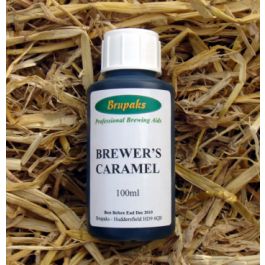Found the paper on
"The Preparation of Invert Sugar in the Brewery". It dates from 1902, so might link in some way to the brewery in Ron's 2017 post.
A 1922 paper titled
"Invert Sugar", while 100 years on we debate what it might be.
"Pure Beer", an 1896 paper on the public perception of the ingredients and methods used to manufacture beer.
Some extracts from the RAGUS website.
Brewer’s sugar block, often referred to as brewing sugar, is a candy sugar produced from
invert sugar,
cane molasses, and dextrose, with its function unique to the brewing industry. Although all types of sugar can be used for fermentation, brewer’s sugar block is most effective in expediting the process because its formulation breaks down sugars into different constituents that are 95% readily fermentable.
Furthermore, different variations of brewing sugar can be produced depending on the style of beer, ale, lager, stout or porter being fermented. These variations differ in colour from light amber to dark brown, with the colour also indicating the flavour of the sugar. This has significant impact on the flavour of different styles of beer.
Brewer’s sugar block can only be produced commercially due to the scale and chemistry behind the production process. It is produced in large inversion pans that cannot be replicated at home.
First, cane sucrose is heated in an inversion pan with water until it dissolves. The sucrose is dissolved to a super saturation before hydrochloric acid is introduced to reduce the pH to between 1 and 1.6. When the temperature of the pan has settled at 70° for over two minutes, the cane sugar completely dissolves in the water and forms a syrup. This is achieved through the inversion of sucrose into glucose and fructose molecules.
Then, the syrup needs to be polarised to -20 to achieve the desired ratio of sucrose: glucose, before being neutralised with a natural alkaline agent that brings its pH value to between 6 and 6.5.
Then, cane molasses is released from its holding tanks and into the inversion pan, adjusting the colour and developing the flavour of the invert syrup. The inversion pan is then cooled, and dextrose seed is added. Without this step, the blend would not form into the distinctive blocks.
The thick syrup then needs to transfer through a 2000 micron filter and is filled into 25 kilogram cartons. The cartons are held in ‘block formers’ for at least five days, but often longer. When the blocks have finally formed, they are loaded onto heavy goods vehicles ready for transportation to customers all over the UK.
At Ragus, brewer’s sugar block is custom formulated to match each customer’s bespoke needs. For example, a lighter brewing sugar can be produced for the fermentation of lagers and pale ales. This lighter variation has an amber colour and its concentration of cane molasses results in a mellow or caramel flavour, making it particularly suited to modern pale ales with a European Brewery Convention (EBC) value of 25-35.
Whereas for those brewing a stronger bitter, we recommend using a darker variation of brewing sugar. Using a higher concentration of cane molasses, as well as other alterations to the production process, results in a stronger brewer’s sugar block. This variation of brewer’s sugar block is a darker shade of amber, considered between 60-70 on the EBC colour scale, therefore best suited to traditional bitters and strong ales.
A further application of brewer’s sugar block is in mild ales, stouts and porters. This variation is produced by further increasing the concentration of cane molasses and adjusting the manufacturing process. With a dark brown colour, approximately 130 EBC, this sugar has a much richer flavour that develops the mouthfeel of stouts and porters.
For a "cider toffee" experiment, add 1 kg of granulated or caster sugar to 500ml of low alkalinity water. Apply a moderate heat while stirring until the sugar dissolves to where few granules remain and the solution is only slightly milky in appearance. Maintain a gentle heat and add a heaped teaspoon of anhydrous citric acid crystals while stirring gently, when the solution should quickly clear. Heat and stir until the mixture simmers, then maintain a gentle simmer for a few minutes when the solution will be seen to color gently. Add about 50 grams of darker sugars, or molasses for a darker invert and stir until evenly mixed, when the heat should be removed.
Inversion will continue at this stage unless the mixture is quickly chilled (not easy) or the pH is reduced near to neutrality by the addition of a base. Using sodium bicarbonate does this very swiftly, but is accompanied by lots of CO2 production. Stand back or add incrementally.
























![Craft A Brew - Safale BE-256 Yeast - Fermentis - Belgian Ale Dry Yeast - For Belgian & Strong Ales - Ingredients for Home Brewing - Beer Making Supplies - [3 Pack]](https://m.media-amazon.com/images/I/51bcKEwQmWL._SL500_.jpg)


































